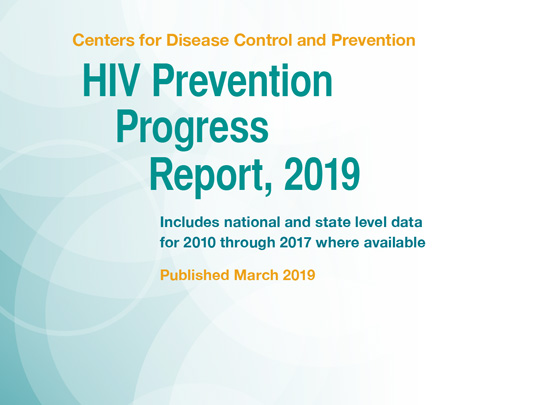The Latest News on Progress in HIV Prevention — and Where to Redouble Efforts
Topics

Cross-posted from Division of HIV/AIDS Prevention, Centers for Disease Control and Prevention
The Division of HIV/AIDS Prevention (DHAP) is pleased to present the HIV Prevention Progress Report [PDF, 34.7MB]. For the first time, this report combines national and state level indicator data (where available) for the 50 states and the District of Columbia. This year’s report provides a more complete picture of progress and emphasizes the importance of state level progress for achieving national goals.
Annual HIV infections (“HIV incidence”) in the United States have been reduced by more than two-thirds since the height of the epidemic in the mid-1980s, but CDC data indicate that progress has stalled in recent years. The concerning stabilization in new HIV infections has occurred because effective prevention and treatment are not adequately reaching enough people who could most benefit from them.
This HIV Prevention Progress Report highlights progress in reaching the 2020 targets while also highlighting differences across population subgroups, recognizing that progress among those disproportionately affected by HIV is important for achieving national HIV prevention goals and improving health equity. We have seen some success. There has been a reduction in HIV risk behaviors among young gay, bisexual males and persons with HIV. Additionally, more people have achieved viral suppression, including youth and transgender women receiving HIV medical care, and the death rate among persons with diagnosed HIV has decreased.
But more work is needed to reduce new HIV infections overall. Too many people who need HIV prevention, care, and treatment services most are not getting it. Disparities remain. Men who have sex with men (MSM); some racial/ethnic minority communities, specifically, blacks/African Americans, Hispanics/Latinos, and persons residing in the southern United States are the most disproportionately affected populations. Further, in recent years, we have seen increases in HIV diagnoses among Asians, American Indians and Alaska Natives. While the number of people prescribed PrEP has increased dramatically overall, studies show that only a small fraction of the estimated Americans who are at substantial risk for HIV, including MSM, racial/ethnic minorities, and women, are actually experiencing the benefits of PrEP. The report also highlights that we have not made progress in reducing non-sterile injection drug use. This, along with the nation’s ongoing opioid crisis, could lead to increases in new HIV infections among people who inject drugs.
The time to act is now.
The recently proposed initiative, Ending the HIV Epidemic: A Plan for America, seeks to end HIV in America in the next ten years. This direct and bold approach will provide the hardest hit communities with the additional expertise, technology, and resources required to address the HIV epidemic in their communities. By providing all at-risk communities with effective prevention and treatment tools, we can end the HIV epidemic in America.
But to effectively and responsibly implement this initiative, we must have sound scientific data. This CDC report shows where we as a nation, and at the state level, are making progress towards the 2020 goals, and where we must redouble our efforts.
Together we can protect the health of our communities. As a partner in HIV prevention, you play an essential role in this effort, and we look forward to continuing our strong collaborations to achieve a future free of new HIV infections.